On June 2, 2015 the Truth and Reconciliation Commission (TRC) reached the end of a six-year journey. Several Commissioners, including those who brought the task to fruition, Honourable Chief Justice Murray Sinclair, Chief Willie Littlechild and Dr. Marie Wilson, listened to and recorded the statements of more than 6,750 victims and survivors of Indian Residential School abuse.
In its Final Report, ‘Honouring the Truth: Reconciling for the Future,’ the Commissioners left little doubt about the legacy of abuse and cultural genocide perpetrated against Canada’s Indigenous peoples by successive government bureaucracies. Their Aboriginal policies were designed to eliminate Aboriginal governments; ignore Aboriginal rights; terminate the Treaties; and, through a process of assimilation, cause Aboriginal peoples to cease to exist as distinct legal, social, cultural, religious, and racial entities in Canada. The establishment and operation of residential schools were a central element of this policy, which can best be described as “cultural genocide.”
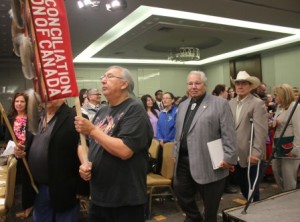
Alberta Elder Jerry Saddleback carries the TRC banner in the Grand Entry on June 2, 2015, at the TRC Final gathering in Ottawa. He is followed by the commissioners: Murray Sinclair, Wilton Littlechild and Marie Wilson. Article by John Copley; Photos by Terry Lusty
The report also made it clear that most of Canada’s churches, and some of the country’s leading educational minds, played a major role in persuading government to take the low-road when it came to Indigenous peoples, insisting that they were inferior, incapable of child-rearing, and in need of being freed from their savagery via assimilation into Canada’s “white thinking” society.
Some of Canada’s Aboriginal leaders are angered by the findings in the report, some are saddened, some are demanding that the Harper government act quickly to resolve lingering issues. Others know better than to expect anything from a government who has already made it clear in several ways that it does not intend to act in good faith or in favour of Indigenous people and their rights – no matter what the Commission says and no matter what the Canadian courts rule. Some First Nations leaders still hold onto hope that the federal government will act in good faith now that the truth about the atrocities that took place during the 150-year reign of Canada’s Indian Residential School system has been told.
The TRC’s Final Report is more than two million words long; the six volumes of work will be translated into six Aboriginal languages.
National Grand Chief Perry Bellegarde said that now the report has been issued it’s time for all levels of Canadian government to step up and play a role in helping to close the gap that exists when it comes to equality under law and an improvement to the quality of life currently being experienced by Canada’s three distinct Aboriginal communities, First Nations, Métis and Inuit.
“All Canadians,” he said upon the release of the report, “are affected by the impacts of the Indian residential schools system and it is time to commit ourselves to reconciliation and action.
“The impacts of residential schools are still with us and are contributing to the gap in the quality of life between First Nations and Canadians. We must close that gap. The schools operated on the assumption that First Nations cultures and languages had to be eradicated and profoundly damaged the relationship between First Nations and Canada. We must repair that relationship. Action is long overdue and I believe that the Government of Canada must formally commit to working with First Nations and engaging Canadians in implementing the Commission’s calls to action.”
The National Chief also said that if Prime Minister Harper’s 2008 apology about the role government played in creating and maintaining the schools is to have any believability or sincerity, government needs to stand up and be counted.
“The work of the TRC gives Canadians an opportunity to understand their role in our shared history and our shared future, and provides governments an opportunity to work with us as partners in reconciliation,” stated Chief Bellegarde. “First Nations are committed to action and change. It is time to restore our original relationship of mutual respect, peaceful co-existence and sharing. It is time for reconciliation. The apology for the Indian residential schools was a shining moment for this country, but that apology compels action, otherwise it will be empty and meaningless. Together, we can and must take action to create a brighter future for us all.”
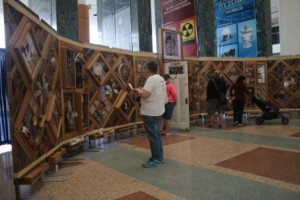
The Witness Blanket stands as a national monument to recognize the atrocities of the Indian Residential School Era, and also to honour the children and symbolize ongoing reconciliation. Photo by Terry Lusty
The TRC’S Final Report has pinpointed 94 calls to action in addressing the legacy of the schools, schools that did much to decimate Canada’ Indigenous societies. The recommendations are just the tip of the iceberg when it comes to reconciliation; Canadians need to act and they need to make certain that government heeds the recommendations set forth by the Commission.
“Starting now,” emphasized TRC Commission Chair Murray Sinclair,
“we all have an opportunity to show leadership, courage and conviction in helping heal the wounds of the past as we make a path towards a more just, more fair and more loving country.”
The TRC’s calls to action include steps to protect child welfare, preserve language and culture, promote legal equity and strengthen information on missing children.

A close look at the Witness Blanket shows the participation of the Erminiskin Indian School in Maskwacis (formerly called Hobbema) and Sechelt First Nation.
“There are already solutions in place that can help us move forward on reconciliation,” Sinclair continued. “The U.N. Declaration is an example of this. We need to begin incorporating and utilizing these solutions.”
The U.N. Declaration on the Rights of Indigenous Peoples has never been fully recognized or accepted by the Harper government and that causes some great concern. If government doesn’t step up to the plate, the recommendations may become another tome of important, documented material that sits on shelf in some government office collecting dust.
Health, education, languages, justice, public inquiries, monitoring and funding are among the top recommendations on the list of 94 recommendations the TRC has developed as a result of its six-year study. Unfortunately, Canada’s federal government has long neglected the needs of Aboriginal peoples and denied their cries for help. To ensure that the TRC’s work was not in vain, it may first be necessary to rid the country of Harper’s so-called Conservative government, a government that puts big business and corporate dollars ahead of all else, including many segments of Canadian society. Without government on board, how will the citizenry react? To date Canadian empathy and understanding about the plight of Aboriginal Canadians has often been discussed, but as individuals we can accomplish little – unless the masses get onboard and demand change from both government and their peers.
“There are many who will pull down the blinders and pretend that this isn’t their issue,” said Commissioner Chief Wilton Littlechild. “We are calling on you to open up your mind, to be willing to learn these stories, to be willing to accept that these things happened. This is not an Aboriginal issue, it’s a Canadian issue.”
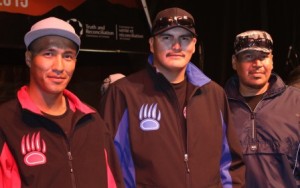
These three young men – (l-r) Raymond Nakogee, Darren Hughie and Edmond Etherington – walked all the way to Ottawa from Attawapiskat, over 2000 kms. to honour residential school survivors.
More important it is a Canadian government issue; continued denial by Ottawa will not work if the people speak up and demand action, action that begins with fulfilled promises instead of lip service, a national inquiry into missing and murdered Aboriginal women and girls instead of inane comments and denial from cold-hearted government bureaucrats, an elimination of the serious overrepresentation of Aboriginal people traumatized by the judicial system, a new series of legislation for Aboriginal education, protection of Indigenous languages and a necessary re-writing of Canada’s history books, most of which marginalize and demean Aboriginal peoples, their cultures and their characters.
One of the recommendations, and one that certainly could have been dealt with in mid-June when Harper made his way to Rome to meet with the Pope, is a call for the papal leader to apologize for crimes committed against Indigenous peoples by the Roman Catholic Church. Harper shook the Pope’s hand and talked with him at length but he did not ask him to apologize.
Justice Murray Sinclair’s comments following a recent meeting with Harper fell short of actual condemnation, but he remains concerned that this government just doesn’t get it. He said that he and Harper “shared a frank and open dialogue,” but also noted that even though “he was open to listening to some of our concerns and inquired about some of our recommendations, I remain concerned with the government’s resistance to the adoption of the United Nations Declaration on the Rights of Indigenous Peoples.”
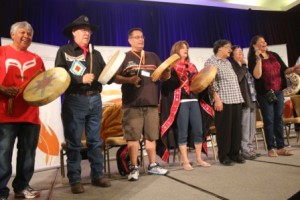
A mix of tradtional drummers /singers perform on stage at the Delta Hotel during the Closing Ceremonies of the TRC gathering in Ottawa.
Among its findings the Commission noted that in many residential schools, supervisors used forms of corporal punishment that would have been considered harsh even in earlier times, when hitting children was still socially acceptable. Those practices included flogging with riding whips, belts and yardsticks, as well as punching, kicking and hair-pulling. It must also be noted that these forms of punishment were often meted out for transgressions such as being caught speaking Aboriginal languages in school, standing in the wrong line for lunch or being late for school.
“At least 3,200 students sent to residential schools never returned home,” stated Commissioner Marie Wilson, “In almost a third of those cases, the student’s name wasn’t even recorded. A quarter of the time, the student’s gender was not recorded.”
She further noted that “the children who attended these schools were severely punished for practising their cultural ceremonies, for speaking their family’s language.” She said that “reconciliation rests on building Aboriginal culture back up, and preserving the languages and ceremonies that the schools tried to eliminate.”
The commission found that medical care at residential schools was often “of the lowest quality” and that they often went hungry and suffered from a poor diet. Additionally, the Department of Indian Affairs was part of “an accepted system of corruption and cover-ups” that kept the Canadian public from learning about these and other abuses against Aboriginal children.
Grand Chief Stewart Phillip, President of the Union of BC Indian Chiefs said that “in order to reconcile for the future, let us truly honour the truth: the State of Canada and the Church committed acts of genocide as defined by the United Nations’ Convention on the Prevention and Punishment of the Crime of Genocide. On this day, as Indigenous Peoples we have endured, survived and we are now honoured to carry our Inherent Rights, Title and Treaty Rights on behalf of our children and grandchildren. The TRC’s 94 recommendations are calls for action by all levels of government and must be implemented as the bare minimum to respect, recognize and reconcile for the sake of our future generations.”
Spokesperson for the BC Assembly of First Nations, Chief Maureen Chapman said that “the Truth and Reconciliation Commission was tasked with the challenging but imperative role of honouring survivors. The Commission reflected on the residential school experience and on a path forward built on principles of reconciliation. The resultant report is a testament to the fact that the residential school experience cannot be isolated from the broader history, including policies and legislation aimed at disconnecting First Nations from their culture, lands, and nationhood, thus contributing to the current challenges facing our communities.”
The Law Society of Upper Canada released a statement following the release of the TRC’s Executive Summary of the Final Report. It praised the effort of the Commission, made it known that it was reviewing the executive summary of the report and noted that it “is committed to acting upon the commission’s calls to action for reconciliation,” when it is possible to do so.
“In particular,” noted Law Society Treasurer Janet E. Minor, “we are committed to enhancing cultural competency within the legal professions and look forward to further discussions about next steps, so that lawyers and paralegals have a greater understanding of Canada’s history and the relationship between the Crown and the Canadian government and the First Nation, Métis and Inuit people.”
The Law Society is encouraging lawyers and paralegals to read the report summary and looks forward to hearing views on how the legal community can respond.
“As professionals, and as Canadians,” said Minor, “we all share a collective duty to continue to work towards reconciliation, by reaching out to First Nation, Métis and Inuit communities to find ways of working together to effect action and change. The result will be a better, stronger Canada.”
In the spirit of reconciliation, the Law Society is working closely with First Nation Métis and Inuit lawyers and paralegals and First Nation Métis and Inuit leaders and citizens to renew its Aboriginal Strategy.
The Truth and Reconciliation Commission was established as a result of the 2007 Indian Residential Schools Settlement Agreement. Its mandate is to tell Canadians about the 150-plus year history of the schools in part through the statements of those whose lives were affected by them.
To learn more and to read the full report and/or segments of it, see the website at: www.trc.ca and click on “TRC Findings.”
by John Copley

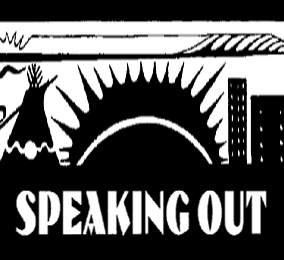

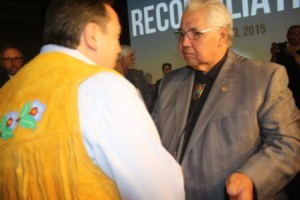


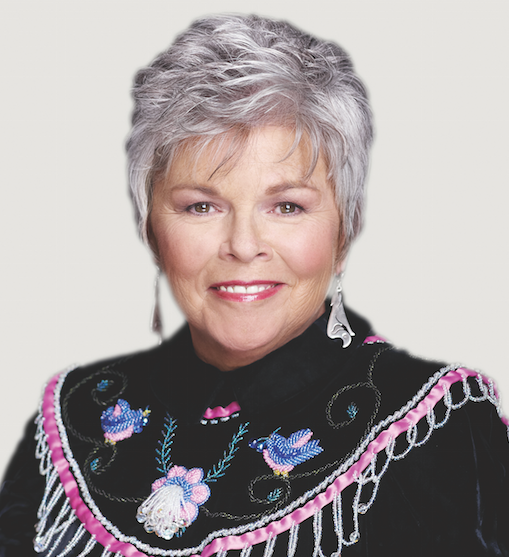
Be the first to comment on "Speaking out: TRC final report calls for immediate actions"